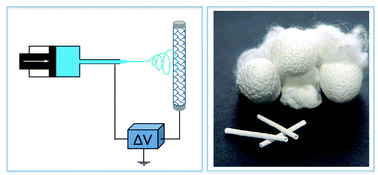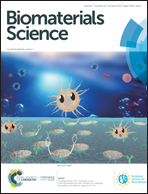SilkBridge™: a novel biomimetic and biocompatible silk-based nerve conduit†
Abstract
Silk fibroin (Bombyx mori) was used to manufacture a nerve conduit (SilkBridge™) characterized by a novel 3D architecture. The wall of the conduit consists of two electrospun layers (inner and outer) and one textile layer (middle), perfectly integrated at the structural and functional level. The manufacturing technology conferred high compression strength on the device, thus meeting clinical requirements for physiological and pathological compressive stresses. In vitro cell interaction studies were performed through direct contact assays with SilkBridge™ using the glial RT4-D6P2T cells, a schwannoma cell line, and a mouse motor neuron NSC-34 cell line. The results revealed that the material is capable of sustaining cell proliferation, that the glial RT4-D6P2T cells increased their density and organized themselves in a glial-like morphology, and that NSC-34 motor neurons exhibited a greater neuritic length with respect to the control substrate. In vivo pilot assays were performed on adult female Wistar rats. A 10 mm long gap in the median nerve was repaired with 12 mm SilkBridge™. At two weeks post-operation several cell types colonized the lumen. Cells and blood vessels were also visible between the different layers of the conduit wall. Moreover, the presence of regenerated myelinated fibers with a thin myelin sheath at the proximal level was observed. Taken together, all these results demonstrated that SilkBridge™ has an optimized balance of biomechanical and biological properties, being able to sustain a perfect cellular colonization of the conduit and the progressive growth of the regenerating nerve fibers.



 Please wait while we load your content...
Please wait while we load your content...